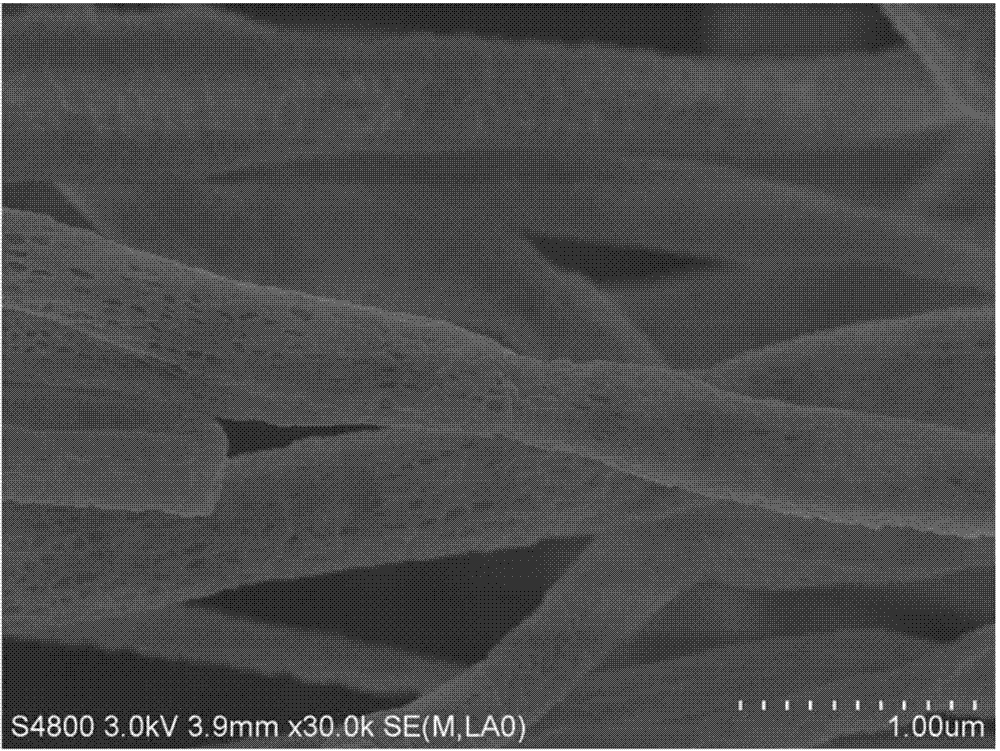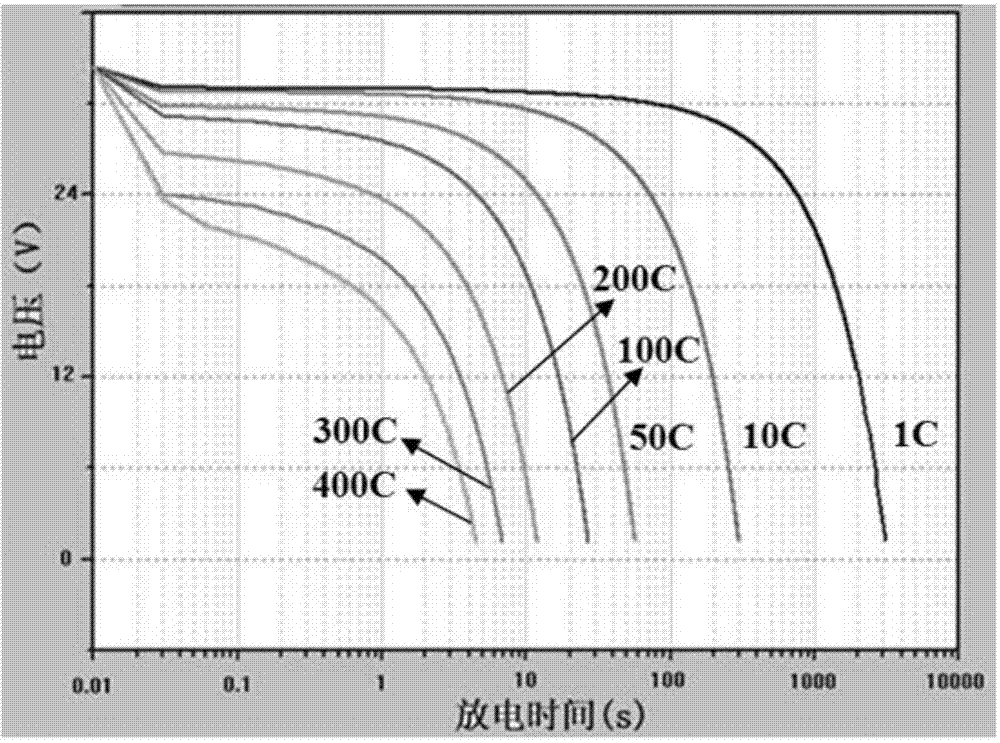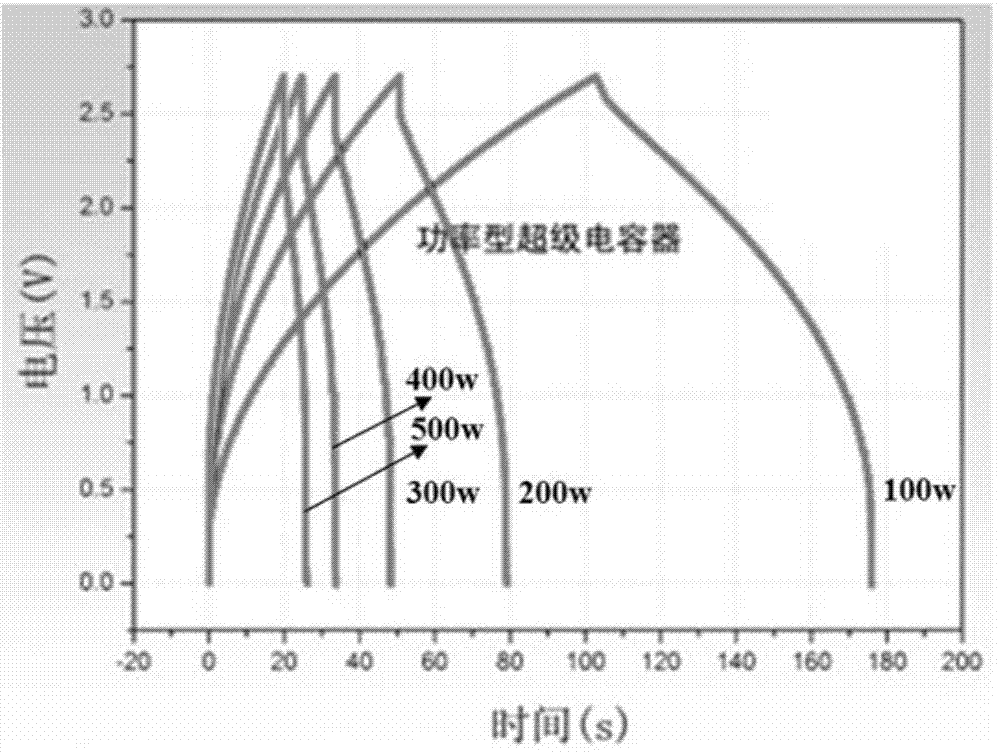Method for preparing polyimide porous nanofiber electrode diaphragm
A technology of polyimide and nanofibers, which is applied in the field of preparation of polyimide porous nano-micron fiber electrode diaphragms for supercapacitors, can solve problems such as low porosity, poor wettability of organic electrolytes, and rupture of electrode diaphragms. Achieve the effect of improving mechanical strength, good physical and chemical stability and mechanical strength
- Summary
- Abstract
- Description
- Claims
- Application Information
AI Technical Summary
Problems solved by technology
Method used
Image
Examples
Embodiment 1
[0037] 1. Preparation of polyamic acid-zinc acetate electrospun fibers
[0038] Dissolve 5.0g of pyromellitic dianhydride and 5.0g of 3,4'-diaminodiphenyl ether in 40.0g of N,N-dimethylformamide (mass ratio is 1:1:8), and then in- React at 5°C to 0°C for 24 hours to obtain a polyamic acid solution with a mass fraction of 17%;
[0039] 2. Preparation of polyamic acid-zinc acetate electrospun fiber membrane
[0040] Add 2.0g of zinc acetate to the 12.0g polyamic acid solution prepared in step 1 and stir for 6h before electrospinning. The diameter of the needle is 1.6mm, the copper mesh is the receiver, the voltage is 10kV, the distance between the needle and the receiver (spinning distance) 10cm, polyamic acid-zinc acetate electrospun fibers were obtained on the receiver, and after 30 minutes of electrospinning, the polyamic acid-zinc acetate electrospun fibers were vacuum-dried at 40°C for 24 hours for use;
[0041] 3. Preparation of polyimide-zinc oxide fiber composite membr...
Embodiment 2
[0048] 1. Preparation of polyamic acid-diethyl zinc electrospun fibers
[0049] Dissolve 5.0g of p-phenylenediamine and 25.0g of biphenyltetracarboxylic dianhydride in 200g of N,N-dimethylacetamide (mass ratio: 1:5:40), then react at 0°C to 3°C for 12h , to obtain a mass fraction of 13% polyamic acid solution;
[0050] 2. Preparation of polyamic acid-diethylzinc electrospun fiber membrane
[0051] Add 0.2g of diethylzinc to the 8.0g polyamic acid solution prepared in step 1 and stir for 6h before electrospinning. The diameter of the needle is 1.6mm, the copper mesh is the receiver, the voltage is 20kV, and the distance between the needle and the receiver is 18cm. The polyamic acid-diethyl zinc electrospun fiber was obtained on the receiver, and after 60 minutes of electrospinning, the polyamic acid-metal salt electrospun fiber was vacuum-dried at 40° C. for 24 hours for use.
[0052] 3. Preparation of polyimide-zinc oxide fiber composite membrane
[0053] The polyamic acid-...
Embodiment 3
[0059] 1. Preparation of polyamic acid-ethylmagnesium bromide electrospun fibers
[0060] Dissolve 6.0g of 4,4'-diphenylsulfonediamine and 5.0g of biphenyltetracarboxylic dianhydride in 100g of dimethyl sulfoxide (mass ratio: 1.2:1:20), and then React for 6h to obtain a polyamic acid solution with a mass fraction of 10%;
[0061] 2. Preparation of polyamic acid-ethylmagnesium bromide electrospun fiber membrane
[0062] Add 1.0g of ethylmagnesium bromide to 20g of the polyamic acid solution prepared in step 1 and stir for 6h before electrospinning. The diameter of the needle is 1.6mm, the copper mesh is the receiver, the voltage is 15kV, and the distance between the needle and the receiver is 15cm. The polyamic acid-ethylmagnesium bromide electrospun fiber was obtained on the receiver, and after 120 minutes of electrospinning, the polyamic acid-ethylmagnesium bromide electrospun fiber was vacuum-dried at 40° C. for 24 hours for use.
[0063] 3. Preparation of polyimide-magnes...
PUM
| Property | Measurement | Unit |
|---|---|---|
| specific surface area | aaaaa | aaaaa |
| specific surface area | aaaaa | aaaaa |
| specific surface area | aaaaa | aaaaa |
Abstract
Description
Claims
Application Information
 Login to View More
Login to View More - R&D
- Intellectual Property
- Life Sciences
- Materials
- Tech Scout
- Unparalleled Data Quality
- Higher Quality Content
- 60% Fewer Hallucinations
Browse by: Latest US Patents, China's latest patents, Technical Efficacy Thesaurus, Application Domain, Technology Topic, Popular Technical Reports.
© 2025 PatSnap. All rights reserved.Legal|Privacy policy|Modern Slavery Act Transparency Statement|Sitemap|About US| Contact US: help@patsnap.com



